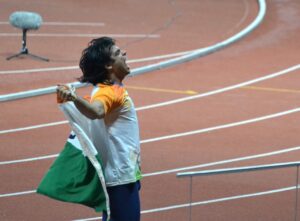
Note: This is a long read. It was originally written for a book edited by a friend. For reasons I shall not disclose here, I chose to withdraw the piece and publish it on circleofsport.com
The captaincy of the Indian cricket teams over the past 75 years is worthy of a whole book in itself. One can immerse oneself in the research and analysis of leadership – qualities, types and cultures – and still only skim the surface. Since everyone has an opinion on cricket captains, it will be rather tough to do justice to a selection of leaders from a region in a chapter.
Of course, Mahendra Singh Dhoni, Sourav Ganguly, Mohammed Azharuddin and Ajit Wadekar’s captaincy skills would be celebrated. These could well figure high with the North Indian quartet of Mansur Ali Khan Pataudi, Bishan Singh Bedi, Kapil Dev and Virat Kohli in any discussion on Indian cricket captains.
If captains are cricketers who set higher standards than their teams would set for themselves, these would figure very high. They displayed a fanatical commitment to winning games for India, making the optimum use of the talent at their disposal, backing their players through thick and thin and encouraging them to perform to potential.
However, the challenge of analysing captains from North India is worth taking up, if only to see if some qualities set them apart from the others. Of course, skippers from other parts boast of some characteristics of their own. Since this is an academic discussion, one is aware that there will be other points of view, each worthy of immense respect.
Having laid down that disclaimer, I must also quickly proceed to insure myself against criticism of being partial to skippers from the north by pointing out that I spent the first half of my life in the south, mostly in my dear Hyderabad where I cut my teeth watching ML Jaisimha’s captaincy mesmerise everyone from far and near.
A historical perspective
All right then. Before we spend time on the four who rate among the country’s best leaders of cricket teams, let us start with a quick survey of all captains from the north.
The Maharaja of Patiala Bhupinder Singh led the first all-India team to tour England in 1911. He would have been at the helm when India made its Test debut at Lord’s in 1932 but withdrew owing to ill-health. He played a great role in the establishment of the Board of Control for Cricket in India, the building of the Brabourne Stadium and the institution of the Ranji Trophy.
Maharajkumar of Vizianagaram Vijaya Anand ‘Vizzy’ and Iftikhar Ali Khan Nawab of Pataudi Sr. were the others from the region who led India before independence. Not much can be said about Vizzy’s cricketing skills since. Nawab of Pataudi Sr. was pretty close to leading the Indian team on the tour of England in 1936, but had to wait for a decade to be India captain.
Vizzy is remembered mostly for his successfully canvassing to be elected as captain of the team and for his massive fallout with Lala Amarnath, leading to the latter being sent home. Nawab of Pataudi Sr. threw his hat in the ring against Vijay Merchant ahead of the 1946 tour. They worked in tandem and ensured that regional and religious differences would not crop up.
The dashing Lala Amarnath was the captain of independent India’s first Test team when it toured Australia in 1948. The first Indian to make a century on debut in 1933, he was acknowledged as a shrewd thinker of the game and entrusted with the responsibility of leading the team against Don Bradman’s Australia.
Lala Amarnath was the first of the captains who miffed the mandarins of the Board of Control for Cricket in India. Anthony de Mello accused him of, among other things, accepting a bribe to include wicket-keeper P Sen in the squad and suspended him. The ageing but pugnacious Lala Amarnath fought back and was reinstated. He led India against Pakistan four years later.
Of course, others like Mohinder Amarnath, Ajay Jadeja, Virender Sehwag, Suresh Raina, Gautam Gambhir, Shikhar Dhawan and Rishabh Pant have all had the distinction of being at the wheel, but not long enough to make an imprint of their own as leaders of the national cricket team.
On Ajay Jadeja and MS Dhoni
Jadeja, as astute a student of the game as they get, is a personal favourite. It is a travesty that he did not get many opportunities to showcase his leadership skills but his keen observation and tactical acumen would have been drawn on by the men entrusted with the job of captaining the team when he was in the squad.
I would have loved to include MS Dhoni in the list. Yes, I am aware that he played his representative cricket for Bihar and Jharkhand in East Zone but he spent so much time in Delhi in his formative years that I could have got away with the choice. However, I shall respect the geographical borders and focus on those who hailed from the Northern parts of India.
We can now turn our attention to the four iconic captains from the north who have left an indelible imprint on Indian cricket. Mansur Ali Khan Pataudi, Bishan Singh Bedi, Kapil Dev and Virat Kohli tickle our minds and cause a surge of emotions. Each occupies the collective mind space of the students of the game, not just their contemporaries, rather comfortably.
Tiger Pataudi
Mansur Ali Khan Pataudi made the players place India ahead of the regions they hailed from, the backgrounds and the languages they spoke. The best thing he did was to ensure that people never felt that he was being in any way biased or unfair or was picking anyone on a personal basis.
Pitchforked into the captain’s role in 1962, 15 years after India won its independence from the British, he led India to its first overseas Test series in New Zealand in 1967. And, with an attack that relied rather heavily on spin, he was able to make an impression as a leader who not only understood the game but also made his team-mates believe that he understood it well.
He may not have been tactically brilliant but he handled India’s spinners admirably. His greatest contribution, though, was in helping his team-mates overcome complexes that had crippled the earlier Test sides. He made them aware of their own strengths and forged a strong team culture.
Bishan Singh Bedi
Bishan Singh Bedi helmed the team in a difficult era – the shadow of Kerry Packer’s rebel World Series Cricket loomed over the side – but played to win Tests, even at the risk of losing some. He was captain when India scripted a famous Test victory in the West Indies and was an optimistic leader when India had an outstanding series in Australia.
Kapil Dev
Kapil Dev made light of his rustic background to be acknowledged as a captain who infused self-belief in his team-mates. A world class pace bowling all-rounder, he was another who liked to play to win and not settle for draws in Test matches. He may not have been a shrewd tactician but he made up with his instinct and flair.
Kapil Dev is most remembered for turning the cricket world on its head by leading India to the conquest of the Prudential Cup in 1983. However, the Test series triumph in England three years later will have to rate just as high. It was the tour when he first backed Chetan Sharma, and brought in Madan Lal when the former was injured. Both decisions paid him dividends.
Virat Kohli
Virat Kohli, a true-blue Delhi cricketer, has created a legacy that will be hard to match. He set such high standards of fitness for himself and his team that it was bound to produce great results. The series conquests in Australia and England were the highlights as India rose to being the world’s best Test team.
He had to deal with split captaincy both at the start and end of his stint as skipper. He also had to chart his course as captain in perhaps the most challenging environment. He wore the mantle of leadership under the scrutiny of hordes of cricket fans on social media, the beauty and beast that was unleashed on an unsuspecting world in the new Millennium.
Traits that bind the four leaders
So what is it that made the four of them succeed as leaders of men in different eras? They emerged as outstanding captains with their aggression, rather unusual for Indian skippers, and an ability to see the game differently. It is this blend that induces me to try and explore their qualities instead of examining success rates and rank them – as many will be tempted to.
By all accounts, the body language of the four captains in our sights always radiated a desire to lead the team on the field – and lead it with the aim of winning. None of them had to work hard for this. It made things easy for the team-mates to understand what was expected of them.
Clearly, each of this quartet was an effective communicator, encouraging their team-mates to express themselves on the field. Yet, they were not known to mince words. Of course, they would not be the ideal candidates to work in the Diplomatic Corps, even if they could be all sugar and honey as well.
Without having to look over their shoulder like Bishan Singh Bedi and Kapil Dev had to in their time as captains, Mansur Ali Khan Pataudi and Virat Kohli were able to foster a strong team culture and earn the loyalty and respect of the team-mates. They drove hard for the squad to forge as one cohesive unit, at times risking displeasing some players and critics.
Of course, Mansur Ali Khan Pataudi inherited a team that was possibly a motley collection of players while Virat Kohli, groomed as a leader, stepped into a cohesive dressing room that Mahendra Singh Dhoni left for him. And yet, he had to have his own vision for the team and get a buy in from the players.
Not stepping back
None of them took a step back during their brushes with officials. Bishan Singh Bedi stood up for the team on a few occasions, not just because he had had a run in with Purshottam Rungta. In some ways, his 1974-75 revolt in Nagpur when the players were put up in the MLAs’ Hostel with only two rooms having water heaters has to be a milestone in Board-Player relationships.
More than half a century later, Virat Kohli did not hesitate to ask for the end of chief coach Anil Kumble’s tenure, though he know that it would not go down well with the then Board President Sourav Ganguly. The truth may never be known but it is a good wager that Virat Kohli was particularly keen to further the team culture he envisioned.
Back in 1984, Kapil Dev had the unpleasant task of convincing the then Board President NKP Salve that he had no grouse against captain Sunil Gavaskar after the selectors dropped the star all-rounder from the squad for a Test against England on being caught in the deep in the New Delhi Test.
Given his royal lineage, Board officials would not cross his path. It was not until his career was drawing to a close that he needed to put his foot down on an issue. Ahead of what became his farewell series against the West Indies in 1974-75, Mansur Ali Khan Pataudi told the selectors unequivocally that he would captain the side in all five Tests or in none at all.
Some of these traits could be purely individual, products of experiences, while others may be the result of the environment around them when growing up. Who knows? The aggressive instinct that binds the quartet is probably inherent as a result of the battles and wars that the people of the region have experienced over several centuries, perhaps making for a hardy lot.
Fostering a team ego
Did the four men have egos? As Olympic gold medal winning basketball player and successful coach, Bill Russell wrote in Russell Rules, “My ego is not a personal ego, it’s a team ego. My ego demands—for myself—the success of my team. My personal achievement became my team achievement.” It can be said without fear of contradiction that these men had such egos.
The biggest things that strikes you about these four captains is their fearless, risk-taking approach. Indeed, their courage and doggedness emboldened them to connoisseurs and casual fans alike across several generations.
Virat Kohli’s debut as Test captain is a good example. Standing in for an injured Mahendra Singh Dhoni against Australia in Adelaide in 2014, he asked the team to attempt chasing the 364-run target on a wearing pitch. India was poised at 242 for two but lost by 46 runs. Many see it as the template he set for Test cricket at a crucial time in its history.
Bishan Bedi, often spoken of as a rebel with a cause, did not throw his hands up in despair when his team faced poor umpiring in the West Indies and Pakistan. Instead, he spoke up and quite brazenly. Similarly, he did not hold back when he and his team suspected John Lever of using Vaseline to make the cricket ball swing. His off-the-field fearlessness was unmissable.
The best illustration of Kapil Dev’s courage will always be the unbeaten 175 he scored against Zimbabwe at Tunbridge Wells in the 1983 Prudential Cup. It resurrected India’s hopes from a depressing 17 for five and changed the course of India’s cricket history. He was also not loathe to speak up against umpiring, including in Australia.
Mansur Ali Khan Pataudi’s fearlessness during his tenure as captain was in evidence even in his farewell series against Clive Lloyd’s West Indies. Trailing 0-2 after defeats in Bangalore and New Delhi, he engineered the team’s comeback -2 with victories in Calcutta and Madras before the visitors triumphed in Bombay. He knew his time was up and retired.
The four captains will mostly be spoken of in admiring tones for their contribution to the evolution of Indian cricket. Of course, there may be some dissenting voices, but what is life without different points of view? Yet, these men can never be ignored. They will figure prominently in any conversation on Indian cricket teams and their leadership.








A top piece on the captains of India from the North. Especially the way the piece shows how they had similarities and yet each contributed to team building, leadership and backing their players. My favourite part in the piece is where Ajay Jadeja’s captaincy is mentioned. Jadeja often doesn’t get enough credit for his game awareness and cricketing knowledge. A brilliant read..enjoyed every bit of it.